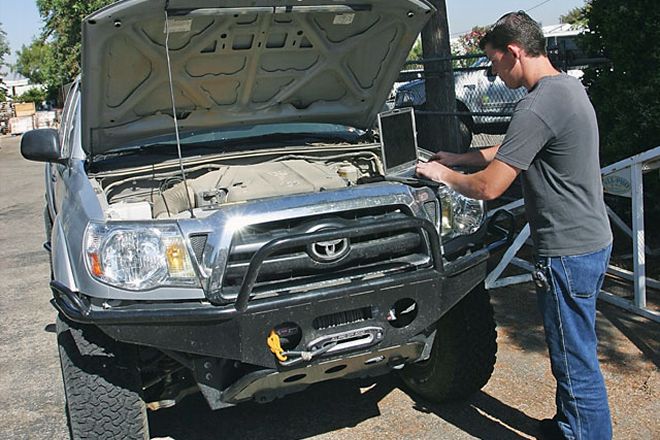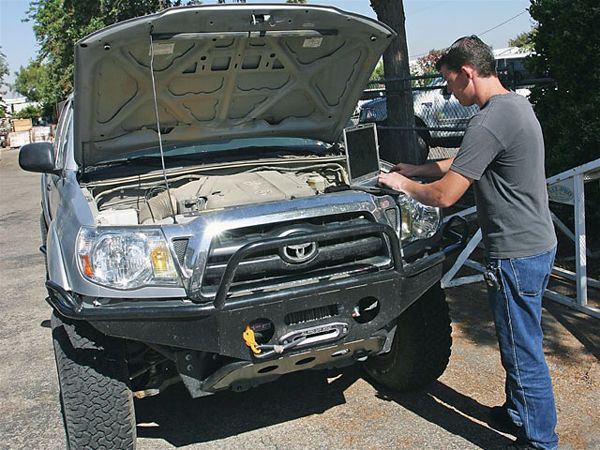
 Fred Williams
Brand Manager, Petersen’s 4Wheel & Off Road
Fred Williams
Brand Manager, Petersen’s 4Wheel & Off Road

There once was a time when a toolbox full of wrenches was all you needed to get more power from your 4x4. Simply bolt on some new heads, a blower, a better intake, a better carb, or some headers and go peel out. But nowdays if you want power you need to tell the computer to step it up. Ever since the onslaught of Electronic Fuel Injection to the top of your mill there have been power gains available by messing with the Electronic Control Module (ECM) or Electronic Control Unit (ECU). To do this requires some way to either trick the computer into thinking it is getting different info than it actually is from its sensors or reprogram the computer completely to carry out something other than stock results.
To make these electronic upgrades requires some sort of interface with the computer system of your truck. This is done either by plugging into the ECU/ECM itself and reprogramming it, using some diagnostics plug and downloading a new set of parameters, or installing a module that goes in line from the ECU/ECM and translates the input from items like Mass Airflow sensors and makes changes accordingly. The computer can then adjust such items as timing and fuel input for more power gains. Most changes are done on the fuel input side, and though this can add some boost to gas-powered trucks, it is especially impressive when done to diesel rigs. However, just like any modification done to your truck, there are very basic versions of computer upgrades and complete custom programs available that are customized to the gearing, tire size, and desired use that you are building for. As usual the more in depth you go, the more impressive the results, but also the more expensive.


 PhotosView Slideshow
PhotosView Slideshow


